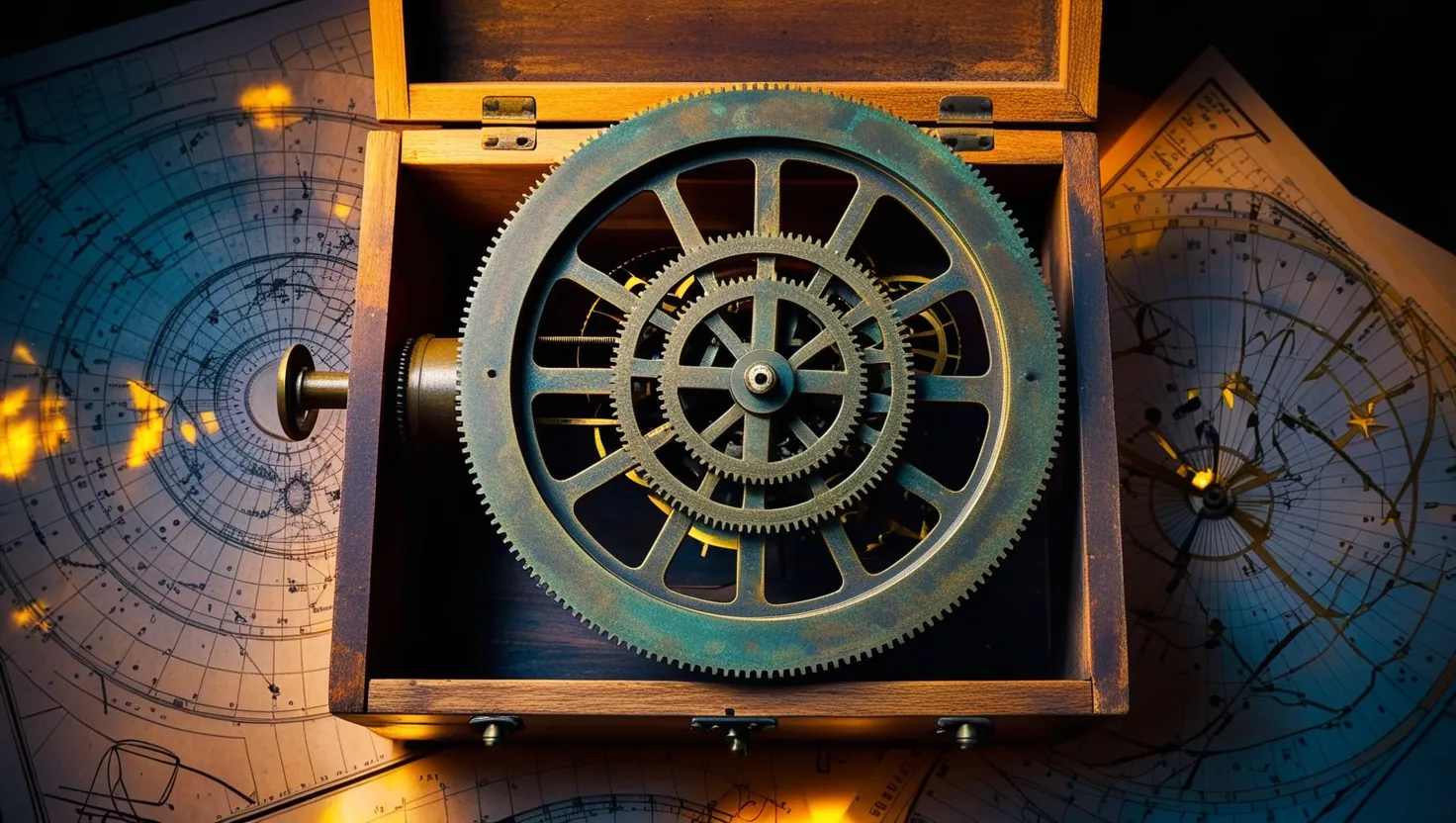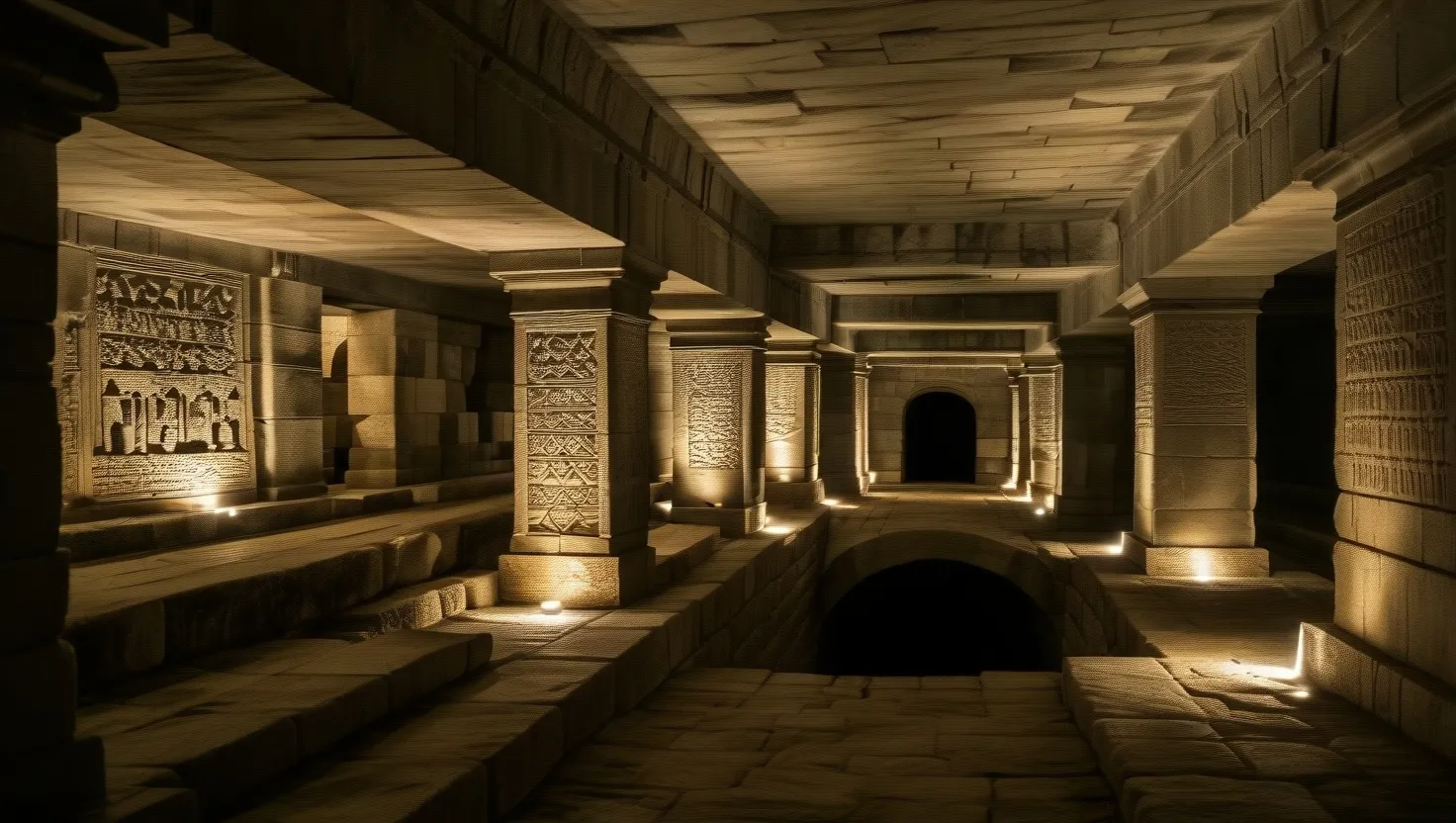If you asked me to name history’s greatest technological surprises, the Antikythera Mechanism tops my list. Picture this: a shoebox-sized device plucked out of a shipwreck near Crete in 1901, corroded almost into obscurity yet packed with dozens of precision-cut bronze gears. It’s from ancient Greece, around the 2nd century BCE—at a time when most mechanical inventions were simple levers and pulleys. This object shouldn’t exist, yet it does. What does that tell us about human ingenuity in lost ages? What other marvels have slipped through our fingers, forgotten by time?
Often dubbed an ancient computer, the Antikythera Mechanism was no mere calculator. Its gears cranked out forecasts of lunar and solar eclipses, tracked the dates of sporting festivals like the Olympics, and charted the movements of planets and stars. If you were an ancient sky watcher or a philosopher pondering your place in the cosmos, this device transformed complicated math into the turn of a handle. The question is, how did Greek craftsmen leap so far ahead of the rest of the world?
“You cannot teach a man anything; you can only help him find it within himself.” — Galileo Galilei
One of the least-known wonders about the mechanism is its use of differential gearing. Modern bicycles rely on similar principles, but no one else documented such technology again until the 19th century. That means ancient engineers were solving problems at a level their European descendants wouldn’t revisit for nearly 1800 years. Did they develop other machines, now lost to history, with comparable sophistication? We have yet to dig up solid evidence, but the possibility hangs tantalizingly over archaeology.
Many have speculated that the Antikythera Mechanism’s roots trace back to the school of Archimedes, the great mathematician. Others argue it was crafted for a wealthy patron, perhaps to teach astronomy or serve a ceremonial role. The detailed inscriptions etched into its surface seem designed to instruct, listing planetary cycles and calendar dates, and even explaining mechanical operations. Some researchers believe it helped predict religious festivals or agricultural cycles, knitting daily life together with the rhythms of the heavens.
“Somewhere, something incredible is waiting to be known.” — Carl Sagan
Yet the mechanism’s construction leaves me with more questions than answers. To create gears this intricate, you’d need high-precision tools. Archaeologists have not found such tools elsewhere from the era. Did this represent a lone genius pushing the boundaries in a hidden workshop, or did an entire tradition of craftsmanship flourish and disappear? Why isn’t there a breadcrumb trail of similar devices, lesser prototypes, or records weaving through Greek or Roman history?
Another interesting angle is its possible use as a teaching tool or philosophical display. In ancient Greece, the boundary between science, philosophy, and religion was thin. Could the mechanism have served as a centerpiece in debates over the structure of the universe or the movements of the stars? Was it a model for skeptical inquiry, or a marvel for ritual display in temples—a fusion of technology and spirituality? Think about this: how would your worldview shift if you watched gears spin and planets move on a brass dial, centuries before telescopes made the true scale of space visible?
How would you feel, standing in front of such a device as a young student? Would it make the logic of the universe feel more knowable, or more mysterious?
Some analysts believe the Antikythera Mechanism offered not just calculation, but communication. Imagine if the knowledge encoded in its gears helped predetermine the best routes for sailors by plotting lunar phases and tidal cycles, or if priests relied on it as a diviner of auspicious days. What stories could those lost operators tell? How did users interpret mechanical predictions in a world of oracles and omens?
“The important thing is not to stop questioning. Curiosity has its own reason for existence.” — Albert Einstein
Here’s another unconventional thought: some modern reconstructions suggest the mechanism could model planetary retrogrades—the odd dance planets make as they move “backwards” across the sky. This would mean its designers were fluent not only in basic celestial events, but also in the subtle mathematical quirks that puzzled generations of astronomers. It’s like discovering the blueprints for a quantum computer in medieval manuscripts.
Another little-discussed fact is how the state of preservation adds to its mystery. The shipwreck contained luxurious statuary and artifacts from all over the ancient world. Did the mechanism belong to a merchant, a philosopher, a political leader, or was it cargo on its way to a greater destination? Are we glimpsing just one node in an ancient network of astrolabes, clocks, and planetariums?
“Technology is nothing. What’s important is that you have faith in people.” — Steve Jobs
What draws me in is how the mechanism defies straight-line progress narratives. For most of history books, technology advances step by step, with each generation building on the last. But the Antikythera Mechanism suggests bursts of innovation can leap ahead, then disappear—perhaps suppressed by war, catastrophe, or simple shifts in culture. The thousand-year gap between this device and Europe’s first clocks shouldn’t exist, yet archaeologists find nothing quite like it until much later.
This challenges assumptions about lost potential. What breakthroughs have happened and been forgotten? What if the mechanism is a relic of an invisible tradition—a lineage of creators whose records were destroyed? Why did the technology vanish after flashing briefly in Greek hands?
Let’s push the speculation further. Some see the mechanism as evidence that ancient societies understood the practical value of scientific instruments—even if they didn’t have the vocabulary of modern mathematics. It wasn’t just a curiosity; it packed real predictive power for those who could read its dials. If this was possible in the Hellenistic world, what other leaps might have taken place in areas like medicine, navigation, or materials science?
One block quote that sums up the spirit:
“Any sufficiently advanced technology is indistinguishable from magic.” — Arthur C. Clarke
What did the users think about this object? Did they view it with reverence, or as a demonstration of human power over nature? Suppose you witnessed an eclipse the mechanism successfully predicted. Would you feel a sense of control, or a new humility before the clockwork universe?
The inscriptions—thousands of tiny, almost lost characters—reveal much about how knowledge was shared. They describe operation settings, calendar cycles, and even instructions. It’s as if the designers expected others to learn and reproduce their work, pointing to a culture of scientific collaboration. And yet, we lack written manuals, contemporaneous commentary, or clear technical drawings. Was the mechanism meant for public education, or was it a closely kept secret among an elite few?
Consider how the Antikythera Mechanism could have inspired later thinkers. Imagine Islamic scholars, early European scientists, or even Renaissance artists finding such a device. How would it have changed the course of astronomy, mechanics, or mathematics?
Is it possible sophisticated gear-driven devices were more common in ancient times than the record now suggests? Could harsh conditions—the shipwreck, corrosion, and centuries of neglect—have wiped out evidence of entire categories of technology?
The Antikythera Mechanism stands in a spot that feels both familiar and alien. I see in it the hand of a society able to translate observation of the cosmos into practical, mechanical form, using principles that seem “modern” in every way. Yet, it is silent about the fate of that expertise.
One final question to consider: does our view of the past shape what we’re willing to find? Are we missing clues because we expect linear progress? Or are we just waiting for the next lucky discovery—a second mechanism, another fragment, a lost library?
“If you want to find the secrets of the universe, think in terms of energy, frequency and vibration.” — Nikola Tesla
The Antikythera Mechanism’s complexity is not just a technological achievement; it’s a mirror to our own curiosity and our tendency to underestimate the creativity of ancient minds. For me, contemplating its gears and dials is a reminder that human innovation is not bound by time, but cycles forward and backward in ways we cannot always see. How many more mechanisms lie waiting beneath sands or seas—ready to change everything we think we know?






